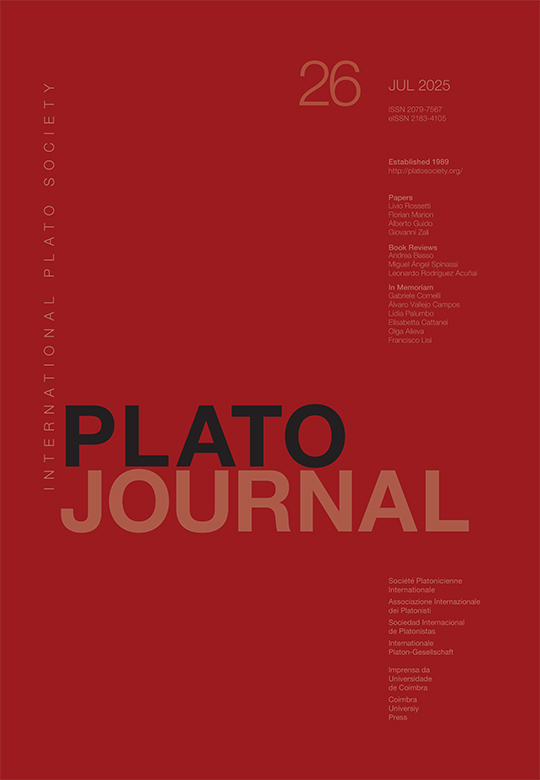I molti imprevisti del Fedro platonico
DOI:
https://doi.org/10.14195/2183-4105_26_1Keywords:
Plato, Plato’s Metaphysics, Palinode, Rhetoric, History of RhetoricAbstract
The themes of the so-called Palinode have often produced different levels of disorientation. For this reason, I considered it necessary to start from the relationship between the Palinode and the three metaphysical dialogues par excellence (Phd., R. and Smp.). In this relationship, factors of discontinuity no doubt prevail, but the memorable creativity of the Palinode powerfully suggests not to dismiss the issue hastily. However, once the Palinode is concluded, why does the enthusiasm with which Platonic Socrates had evoked “World 2” in the Palinode dissolve in an instant? The sudden distancing that follows seems unmotivated and is therefore difficult to account for. In view of that, I argue that the post-Palinode section of the Phaedrus is marked by a very clear desire to look forward, to the present, and not back, so as to say things that are (or could be) significant for Plato’s contemporaries. A special attention is then paid to the new, and impressively creative, idea of rhetoric that surfaces in Phdr. 261ab and 264c. A section on orality and writing follows. Here I maintain that this does not go at all in the direction indicated by the masters of the so-called Tubingen School. I then argue that the Phaedrus is aimed at several (but primarily two) different types of audience and that not every goal was fully reached by Plato – which, if you think about it, is not surprising.
Downloads
Downloads
Published
How to Cite
Issue
Section
License
Copyright (c) 2025 PLATO JOURNAL

This work is licensed under a Creative Commons Attribution 4.0 International License.
Authors retain copyright and grant the journal right of first publication with the work simultaneously licensed under a Creative Commons Attribution License that allows sharing the work with recognition of authorship and initial publication in this journal.









